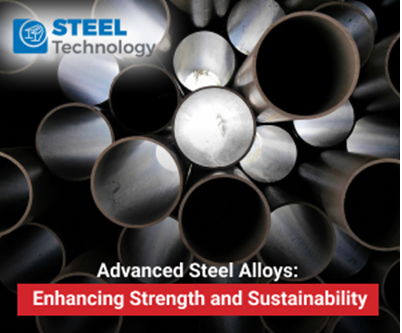Green Steel Production: Sustainable Practices and Carbon Reduction

Introduction
Steel serves as the foundation of our modern world, finding its way into countless applications, from towering skyscrapers and robust bridges to the everyday vehicles and appliances we rely on. Nevertheless, traditional steel production methods carry a significant environmental burden, contributing substantially to greenhouse gas emissions and the overarching challenge of climate change. But here's the promising news: the steel industry is currently in the midst of a transformative journey, embracing innovative approaches to create what we call "green steel." This shift in perspective revolves around sustainable practices and state-of-the-art technologies with the overarching goal of reimagining how steel is manufactured while dramatically curbing its environmental impact. In this article, we will dive deep into the concept of green steel production, examining the sustainable methods and cutting-edge technologies that hold the potential to revolutionize the entire steel industry.
The Carbon Conundrum
Before diving into green steel production, let's understand the problem it aims to solve: carbon emissions. Traditional steelmaking relies heavily on a process called "blast furnace" technology. In this method, iron ore is melted in a blast furnace using coke (a form of coal) as a fuel source. This process releases a massive amount of carbon dioxide (CO2) into the atmosphere, making steel production one of the most significant industrial sources of CO2 emissions globally.
To put it simply, the production of traditional steel contributes to climate change by pumping huge amounts of greenhouse gases into the air. This is where green steel production comes in – it's all about finding ways to make steel without releasing as much carbon dioxide.
The Quest for Green Steel
Green steel is the answer to the carbon conundrum. It aims to produce steel with significantly lower carbon emissions, and it does so through a combination of sustainable practices and innovative technologies. Here are some key strategies and methods used in green steel production:
1. Recycling and Circular Economy: One of the simplest ways to reduce carbon emissions in steel production is to recycle steel. When you recycle steel, you're not mining new iron ore, which is an energy-intensive process. Instead, you're reusing existing steel, which requires less energy and emits fewer greenhouse gases. This is often referred to as a "circular economy" approach, where products are reused and recycled instead of being discarded.
2. Hydrogen-Based Steelmaking: Traditional steelmaking relies on coke as a fuel source in blast furnaces. Green steel production, on the other hand, seeks to replace coke with hydrogen. Hydrogen is a clean-burning fuel that, when used in the steelmaking process, produces water vapor instead of carbon dioxide. This is a significant carbon reduction strategy.
3. Electric Arc Furnaces: Another method to reduce carbon emissions is the use of electric arc furnaces (EAFs). Unlike blast furnaces, EAFs melt scrap steel using electricity rather than coke. This approach is more energy-efficient and emits fewer greenhouse gases.
4. Carbon Capture and Storage (CCS): Despite the adoption of green technologies, there may still be residual carbon emissions during steel production. CCS, short for Carbon Capture and Storage, is a technology designed to capture CO2 emissions and safely store them underground, preventing their release into the atmosphere. Think of it as a carbon emissions vacuum cleaner, effectively trapping and sequestering the greenhouse gases produced in the process.
5. Sustainable Sourcing: Green steel isn't just about the production process; it's also about the materials used. Sourcing iron ore and other raw materials sustainably, such as from responsible mining operations, helps reduce the environmental impact of steel production.
6. Energy Efficiency: Improving the energy efficiency of steel plants can also lead to substantial carbon reductions. This includes optimizing processes, reducing waste, and using renewable energy sources.
Real-World Examples
To illustrate how green steel production works in practice, let's take a look at a couple of real-world examples:
1. Sweden's HYBRIT Project: In Sweden, the HYBRIT project stands as a pioneering endeavor with the objective of generating carbon-neutral steel. This innovative approach replaces coal with hydrogen in the iron ore reduction process, resulting in a significant reduction in carbon emissions. Collaborators in this visionary project encompass steel manufacturer SSAB, mining firm LKAB, and energy provider Vattenfall. Their ultimate aspiration is to shift the entirety of steel production toward green technology by the year 2035.
2. Nucor Corporation in the United States: Nucor, a leading steel producer in the U.S., has been investing in electric arc furnace (EAF) technology to produce steel more sustainably. EAFs are not only more energy-efficient but also allow for greater use of recycled scrap steel, further reducing the carbon footprint.
Challenges and Future Prospects
While green steel production offers promising solutions to the carbon emissions problem, it is not without its challenges. Here are some of the obstacles that the industry faces:
1. Cost: Transitioning to green steel production methods can be expensive. Hydrogen-based steelmaking, for example, requires significant infrastructure changes and the development of a hydrogen supply chain. These initial costs can be a barrier for some companies.
2. Scaling Up: Many green steel technologies are still in the experimental or early stages of development. Scaling up these technologies to meet the global demand for steel is a significant challenge.
3. Energy Sources: Producing green hydrogen, a key component of green steel production, requires clean energy sources. Without a reliable and sustainable energy supply, the benefits of green steel may be limited.
4. Competition: Traditional steel production methods are deeply ingrained in the industry. Transitioning to green steel may face resistance from established players.
Despite these challenges, the future of green steel looks promising. As governments and industries increasingly recognize the urgent need to reduce carbon emissions, investments in sustainable steel production are likely to grow. Additionally, as technology advances and economies of scale are realized, the cost of green steel production is expected to decrease.
Potential Benefits and the Global Impact of Green Steel Production
Green steel not only reduces carbon emissions but also has a ripple effect on various aspects of our lives:
1. Climate Change Mitigation: With the steel industry accounting for a significant portion of global emissions, transitioning to green steel can make a substantial contribution to mitigating climate change. This aligns with international commitments, such as the Paris Agreement, which aims to limit global warming.
2. Enhanced Air Quality and Healthier Communities: The adoption of green steel production translates to reduced airborne pollutants, leading to an amelioration in air quality and the well-being of individuals residing in proximity to steel facilities. This reduction in pollution can also serve to alleviate respiratory ailments and mitigate various health concerns linked to prolonged exposure to industrial emissions.
3. Job Creation: The shift to green steel requires investments in research, technology, and infrastructure. This, in turn, creates job opportunities in research and development, construction, and operation of green steel facilities.
4. Resource Conservation: By emphasizing recycling and sustainable sourcing, green steel reduces the need for virgin raw materials, preserving natural resources and ecosystems.
5. Gaining a Competitive Advantage: Given the increasing emphasis on sustainability within both consumer and business sectors, companies that adopt green steel practices have the opportunity to secure a competitive edge and access new markets.
Conclusion:
In summary, green steel production represents more than merely reducing carbon emissions; it encompasses the creation of a sustainable, healthier, and more prosperous future for everyone. Although challenges persist, the shift towards green steel is a crucial stride in the global endeavor to combat climate change and construct a more sustainable world.











